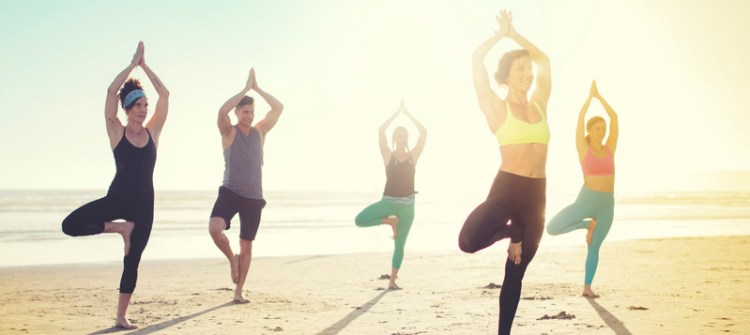Body balance is important for all of us. It is our sense of balance that helps us walk, cycle, ride a two-wheeler. And amazingly, body balance helps improve mental balance as well. People with good body balance tend to have a more balanced mind.
Body balance is something that most people tend to overlook; however it should be incorporated into any fitness routine. It improves body awareness, physical coordination and more. We look at all the reasons balance is important and ways in which yoga can help improve balance.
Why body balance is important
Balance is required all the time; whether we are moving or standing still. It is what prevents us from falling and banging into things, and improving proprioception (the sense/ orientation of our body and limbs in a space). It lets us reach high objects, climb up, down and do a lot of other things safely. If you have good body balance you are less likely to trip or stumble and will be able to minimize injury if you do. Your reaction time improves, which can have a positive impact on different areas of life.
Body balance becomes more and more important as we get older, because it prevents falls and injuries. Preventing falls and fractures later in life is even more important than when one is younger, fitter and better able to self-heal. Good balance helps avoid joint problems and ailments later in life.
Yoga poses that help improve body balance
Body balance, along with flexibility and improved muscle strength are some of the main advantages of yoga. In particular, you can improve body balance with the help of these aasans:
Vrikshasana or Tree Pose

Place one foot on the inner thigh of the opposite leg and bring the palms up to join in a Namaste before raising them up over your head. Repeat with the other leg.
Ek Hasta Vyaghrasana or One-handed Tiger Pose

On your hands and knees, raise one leg up behind you and then reach with the opposite hand to hold your foot or ankle. Release and repeat this with the other arm and leg.
Virabhadrasana III or Warrior III Pose

While standing up, extend one leg up behind you, bend forward at the waist and extend both arms forward in front to form a straight line of the raised leg, torso and arms; with just one leg on the ground. Repeat on the other side.
Garudasana or Eagle Pose

While in standing position, lift one leg and cross it over and around the other leg so that the foot of one leg is resting behind the calf of the other. Now bring one elbow to rest in the hollow of the other elbow and twist your arms in almost the same way as your legs. Change sides.
Utthita Hasta Padangusthasana or Hand to Toe Pose

While standing, extend one leg up and to your side and reach with your hand to clasp your toes. Repeat on the other side.
For yogis who can perform more advanced aasans, the headstand or Shirshasana and the crow pose or Bakasana can also be done. I have to urge all readers to please take the advice of a trained, experienced yoga instructor to do these poses and to ensure that these are suitable for you given your age and fitness levels.
